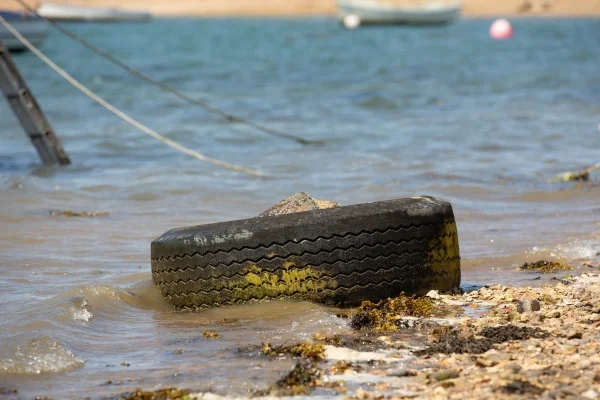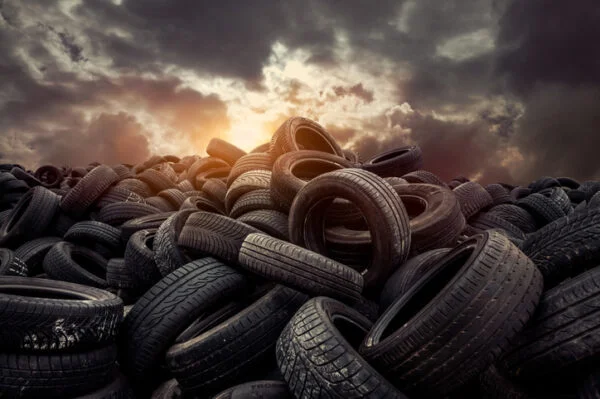Tyre wear particles
As tyres break down they release a range of particles, from visible pieces of tyre rubber to nanoparticles.
Large particles are carried from the road by rain into rivers, where they may leach toxic chemicals into the environment.
Smaller particles become airborne and breathed in; they are small enough to reach into the deep lung.
These particles may contain a range of toxic chemicals including polyaromatic hydrocarbons, benzothiazoles, isoprene and heavy metals like zinc and lead.
Environmental effects
Particulate matter from tyre wear is a significant source of microplastics in rivers and oceans, and tyre wear in cities could pose up to a four-fold greater risk to the environment than other microplastics.
While existing technological interventions (such as filters) and environmental policies could help to control our ecological footprint, there are huge gaps in our knowledge, understanding and ability to forecast the impacts of tyre wear pollution.
‘Tyre waste does not naturally degrade and instead builds up in the environment, and may interact with other pollutants as well as biological organisms. Our gaps in understanding make further research and development of new solutions vital so we can limit all types of vehicular pollution.’
DR WILL PEARSE
Co-author, from Imperial’s Department of Life Sciences
Tyre wear and human health
The impact of tyre wear particles on human health is an increasing cause for concern, and the researchers say the full long-term effects on our health urgently require more research.
There is emerging evidence that tyre wear particles and other particulate matter may contribute to a range of negative health impacts including heart, lung, developmental, reproductive and cancer outcomes.
‘We are growing increasingly concerned by the impact of tyre wear on human health. As some of these particles are so small they can be carried in the air, it’s possible that simply walking on the pavement could expose us to this type of pollution. It is essential that we better understand the effect of these particles on our health.’
PROFESSOR TERRY TETLEY
Co-author, Imperial’s National Heart and Lung Institute
Shifting gear
The researchers argue that reducing tyre pollution should be seen as a critical part of making transport cleaner and more sustainable, alongside reductions in CO2 and other exhaust emissions.
In tackling the climate crisis, we should design better systems and technologies to protect the environment – and research funding, government policy and regulatory frameworks should reflect this.
The report authors call for policymakers and scientists to investigate the complex problems related to tyre-wear pollution, from the basics of wear-particle production, to understanding how these particles affect the health of people and the planet.
Potential innovation solutions include particle capture technologies, new advanced materials and disruptive business models that encourage different transport choices.
These need to be coupled to clear policy and regulation and to a broader discussion around urban transport systems.
 Play Video about This Rock Might Just Save The World
Play Video about This Rock Might Just Save The World Play Video about Play 2 hours of rock
Play Video about Play 2 hours of rock Play Video about Play 2 hours of brook
Play Video about Play 2 hours of brook Play Video about Play 2 hours of sheep
Play Video about Play 2 hours of sheep















































